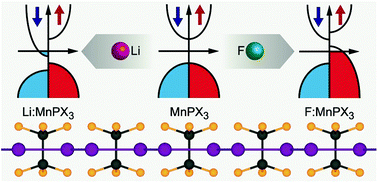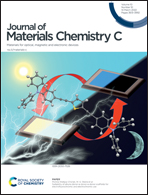Realization of the electric-field driven “one-material”-based magnetic tunnel junction using van der Waals antiferromagnetic MnPX3 (X: S, Se)†
Abstract
Presently, a lot of efforts are devoted to the investigation of new two-dimensional magnetic materials, which are considered as promising for the realization of future electronic and spintronic devices. However, the utilization of these materials in different junctions requires complicated processing that in many cases leads to unwanted parasitic effects influencing the performance of the junctions. Here, we propose a new elegant approach for the realization of the “one-material”-based magnetic tunnel junction. Several layers of 2D van der Waals MnPX3 (X: S, Se), which are insulating antiferromagnetic in their ground state, are used and the applied external electric field leads to the conversion of the outermost layers of the MnPX3 stack to half-metallic ferromagnetic states. The rich state diagram of such a magnetic tunnel junction allows precise control of its tunneling conductivity. The realized “one-material”-based magnetic tunnel junction allows all effects connected with the lattice mismatch and carrier scattering effects at the material interfaces to be avoided, giving high potential for the application of such systems in electronics and spintronics.



 Please wait while we load your content...
Please wait while we load your content...